This is where I track the games that I'm currently playing. I try to update it once per month if I've been playing something new (to me).
Show year: 2021, 2020, 2019, 2018, 2017, 2016, ALL
June 2021

Stardew Valley
There is a bunch of new content out for Stardew, so I decided to play another two year game and explore the new additions. Thirty hours later, and well into year three I think I'm about done. This is the first recent playthrough for me where I didn't get all candles at the end of year 2 -- I was too busy exploring the new content and failed to get married or make many friends. There is a new island off the coast of Pelican Town called Ginger Island. It's tropical, has new mango and banana trees, and a whole new dungeon to explore. While exploring the island you obtain golden walnuts that can be used to unlock areas on the island, such as a resort for visiting townspeople, a trading post, and (most importantly) a second farm. The farm grows year-round, any crop, and has no crows -- so it's a huge moneymaker. It's like a giant greenhouse. The island also has a room where Mr. Qi hangs out and sends you on missions and gives you access to some awesome new items. You can also unlock more content if you achieve perfection -- which the criteria look a good additional ten or twenty more hours at least. Think I will pass on that for now.
May 2021
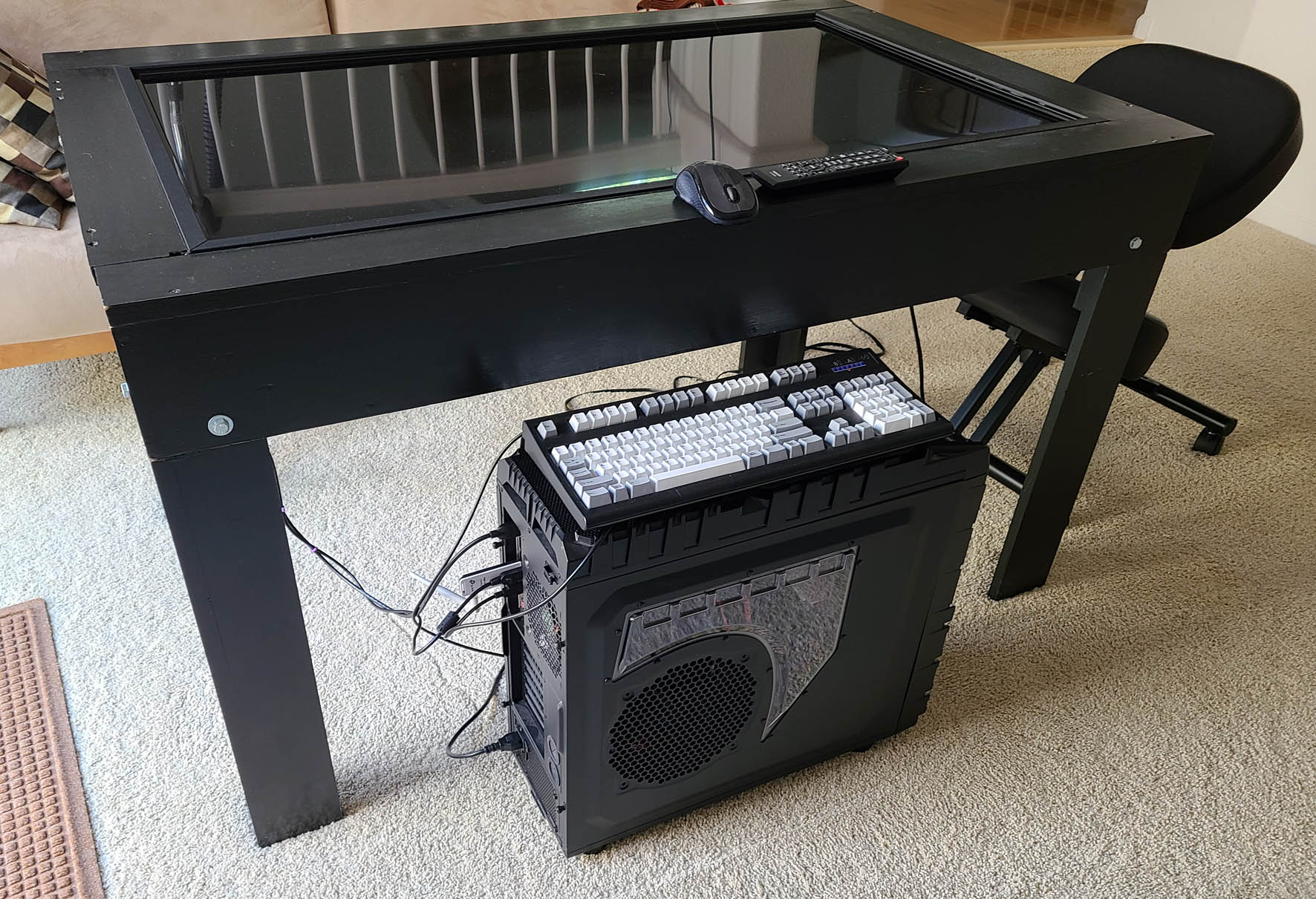
Hardware: new computer for my touch table
I spent this month playing Conan Exiles, Overwatch, and Quake Champions - all old games that I've reviewed before. But I also built a new computer. Ever since I gave my nephew the computer I had previously hooked up to my touch table, I've been running it off of a 10 year old laptop. That was no longer running some of the touch table games properly, so I had to retire it and build a replacement. You can read about my touch table here.
I already had the (obnoxiously big)case, power supply, and even the memory laying around in my storage pile so I only had to pick up the mobo, cpu, SSD, and OS. All said and done the components I was missing only cost $382. It's a competent machine; it runs Win10 on a hyperthreaded four core Intel 10100 @3.6 GHz, an ASUS H510M motherboard, 32GB of RAM, and a 512GB M.2 SSS. If I ever manage to get my hands on an Nvidia 3000 series card I will move my 1070 into this new computer which will become my full-time VR machine in my living room.
April 2021
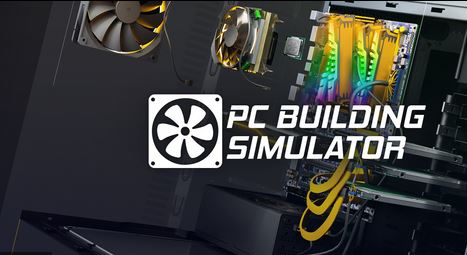
PC Builing Simulator
I always thought this looked like a fun title, but it seemed overpriced. It showed up in Humble Choice so I got it pretty cheap. I'm glad I didn't pay full price. This is more of a game than a pc building simulator. They've taken the very basic modular components and gamified putting them together. You take orders from clients, clean the viruses off their computers, swap out their ram, and so on. I guess I was hoping for a more hardcore sim, where I can pick real-world components and stick them together and look at things like power consumption, temperatures, and maybe even some theoretical benchmarks or hardware conflicts for a build. In hindsight, I should have realized how hard that would be. I got a few hours of fun out of it, though. Definitely seems like this could be a free game with sponsorship coming from real-world component makers who want to advertise.
March 2021
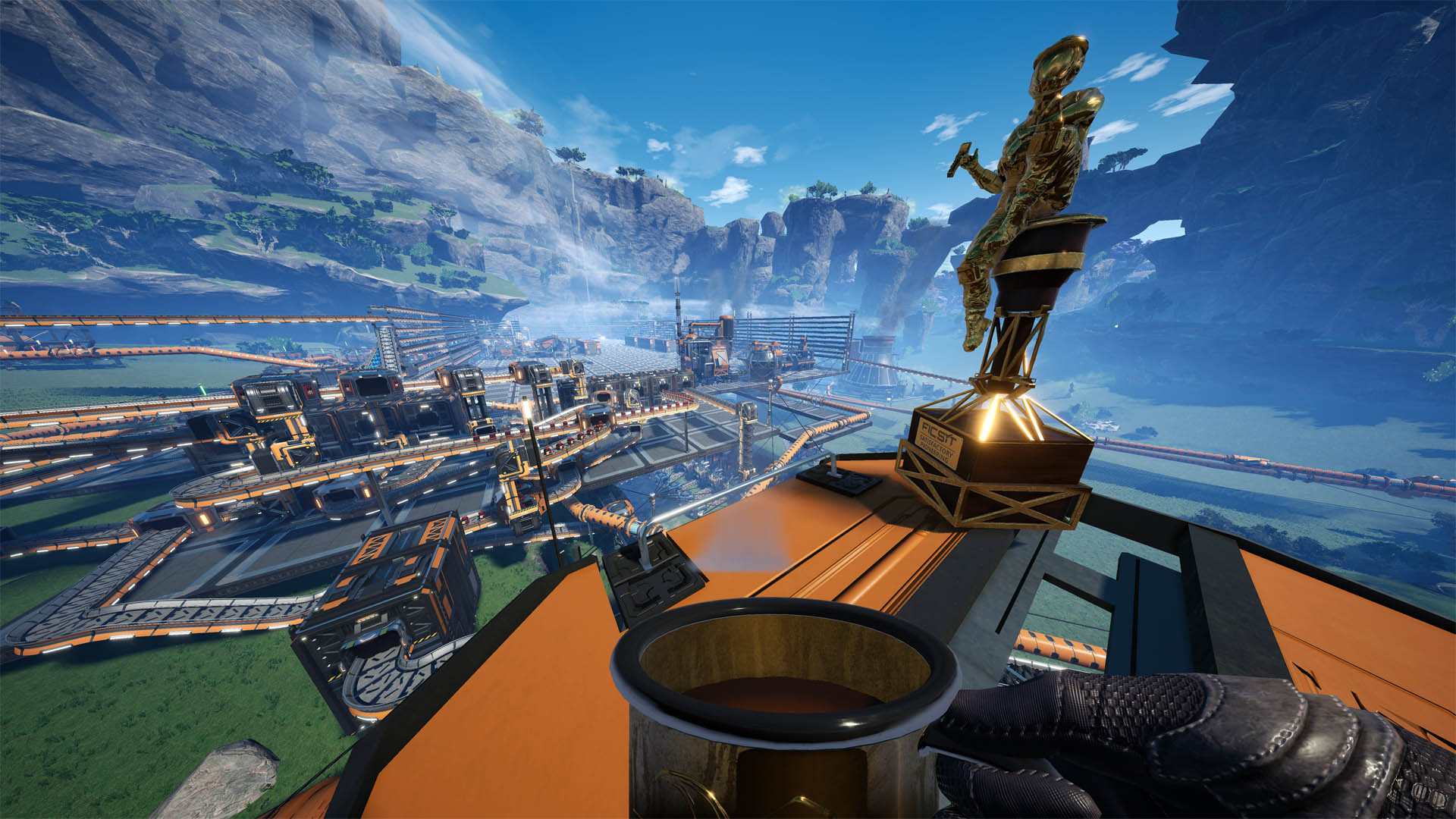
Satisfactory Update 4
The long awaited (delayed by COVID) Update IV for Satisfactory finally dropped from Coffee Stain Studios, we have drone transport for our manufactured goods, along with lots of other cool stuff. I played another game from scratch - starting with nothing and working up to nuclear power, including the new plutonium reactor. The screen cap here is from my game (click for larger image) - and shows my new favorite factory location. Just up the hill is plenty of iron and copper for early game, there is a crystal mine nearby as well as sulfur, and with the addition of well pressurizers and extractors water is available as well. I still build a secondary base out along the northwest coast for oil products, as there is a convenient bauxite mine up there too. At last, we have power storage to smooth out the grid, and smart splitters with overflow, nice. They've done a lot of balancing and worked out some kinks in the liquids system. At this point it feels like a finished game to me, less the story elements that are coming (and possibly dedicated servers for co-op). I'll definitely be playing through again.
February 2021
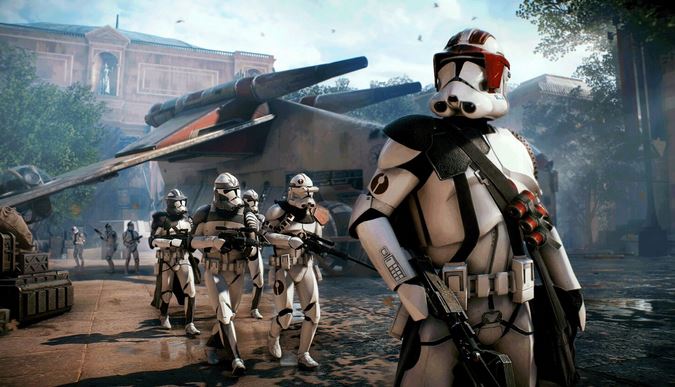
Star Wars: Battlefront II
When this game was released, it had some serious grind issues to get certain unlocks - an obvious ploy to get you to spend additional money in-game. This led to "the most downvoted reddit comment ever" (you can search that phrase if you are interested). But it's been three years, and they've made a lot of improvements to the game, so my gaming group picked it up on sale for ten bucks and gave it a chance. We ended up playing quite a bit, and I feel like it now lives up to its predecessor in most regards. The flight mechanics are abhorrent, but the ground-based vehicles make up for it. There's a decent mix of maps and game-modes, and plenty of playerbase to populate the servers. No server selection though, those days seem to be at an end for online multiplayer. Cheating seems minimal, the graphics are great, and it has that Star Wars vibe you crave. Give it a try, I think they give it away for free once in a while.
January 2021
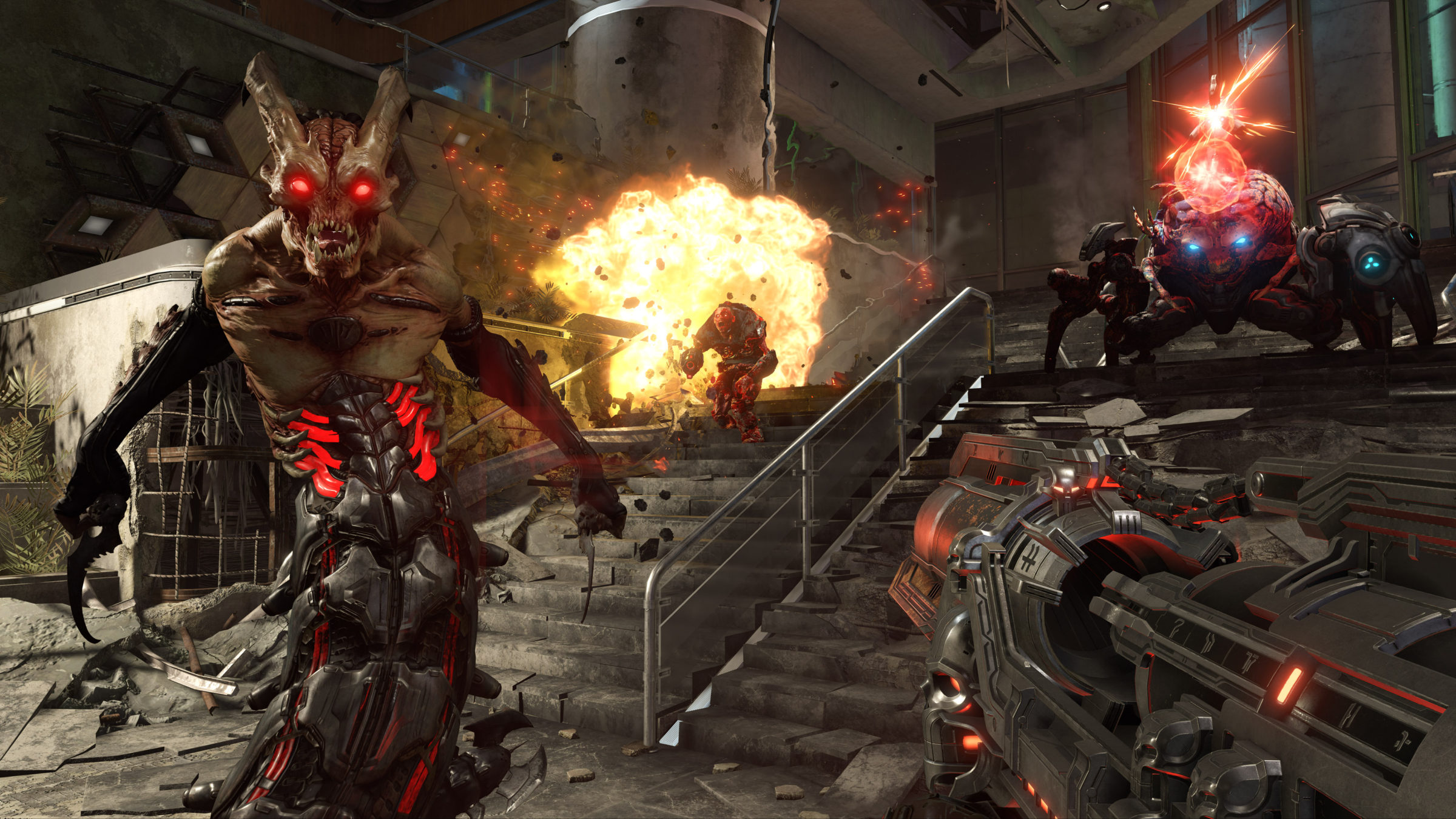
Doom Eternal
I finally got around to playing the sequel to 2016's Doom reboot, Doom Eternal, and it was every bit as good as its predecessor. ID Software's IDTech7 engine gives me a consistent 100fps of buttery smooth, 2K demon-slaying graphics on my nearly five year old graphics card, the GTX1070. No other game engine on the market cranks out the kind of graphics, at amazing frame rates, than ID's engine - and it really adds that extra dimension to an incredible game. Doom Eternal finds the Earth invaded by hell's worst, and the Doomslayer has to bring the invading demons to an end using all the traditional weapons in his arsenal, plus a few new ones. The adventure moves from Earth, to other worldly realms, to Mars, and back again. The story is great, the game mechanics are great, and the quality of the title is top-notch. Time to complete the campaign was about 25 hours. Released in 2020, the game can be caught on sale for $20 and I recommend it without hesitation at that price. Doom II, from back in the 90s, is one of my favorites of all time - and the reboots live up to the legend.
December 2020
2020 Year End Review
I didn't get around to playing Bethesda's DooM Eternal this year, but I finally picked it up during the Christmas sale. I didn't get around to buying it earlier because I've been working off a backlog of games I bought during other sales, and from Humble Choice. I started playing Subnautica in November, and immediately knew it was going to be my favorite game of the year, so I waited until this month to do a review. Other non-vr games that I played this year that deserve special mention are Shadow of the Tomb Raider, which I reviewed in January, and the Isle of Siptah expansion for Conan Exiles, which I reviewed in September. Having played other Tomb Raider games, and not really gotten into them, SOTR was a nice surprise that came to me via Humble Choice. It really knocked it out of the park. The graphics are great in a beautiful jungle setting, the gameplay is solid, the story is well written, and the length is perfect. Conan's Isle of Siptah was a must-buy for me, as a change of scenery and some new content in one of my favorite games of all time.

Subnautica
My personal favorite of the year goes to the underwater survival-adventure game, Subnautica. The game had an early-access release way back in 2014, but I didn't hear about it for several years after that. It left early access in 2018, and released an expansion (Below Zero) in 2019 - which I have not played. It's definitely a finished and polished product at this point, and I recommend it without hesitation. The game is set on a watery planet where your ship, The Aurora, has crash landed. Your goal is to explore the planet, gather the resources you need to build an escape craft, and get yourself back into space. You're not entirely alone, however. The technology of some ancient aliens is both helping and hindering your progress, and won't let you leave until you cure yourself of a bacterial pathogen which seems to be plaguing the planet.

Subnautica is unique in that it takes place almost entirely underwater (as you may have guessed from the name). The underwater environment is beautifully rendered, and the feel of truly being beneath the surface is there. The exploration of the planet is nicely guided by the game's story, while letting you set your own pace and preserving the open-world feel. The diversity of resources is wide, but not overbearing, and crafting is straightforward - but features enough depth to keep it engaging. In other words, it's a very well-balanced survival/crafting experience. The story starts off slow and mysterious, and finishes strong. It's interesting enough to encourage you to learn more, but not tedious with needlessly deep lore. It took me around fifty hours to finish, but that also includes some messing around in the game's VR mode - which doesn't have the same polish, for Valve Index users anyway. You use a gamepad instead of the Index controllers - and it took me a good hour to figure that out. That's how unguided the VR mode is, and it definitely feels like a console port. Once you get your gamepad set up, the VR experience is interesting enough to at least start a new game and see how it goes. The graphics are still fluid and sharp, and there is no motion sickness problem.
Half-Life: Alyx, and 2020 in Virtual Reality
My other favorite game of 2020 is Valve's Half Life: Alyx. The long awaited third installment in the Half Life series came to us in Virtual Reality. The game is a remarkable achievement, and Valve's best work in years. Alyx was included with my purchase of the Valve Index VR kit, and is exactly what a AAA Virtual Reality title should be. The movement and inventory system are a world apart from any other VR title I've tried yet, the visuals are amazing, and every bit of the game design really shows that the title was planned out to fully utilize the VR environment from the beginning. The story is also five out of five stars, everything you'd want in a Half Life title. Valve could not have done a better job with the headliner title for their premium headset. Having said all that, there is one problem. The title is too good. It makes other VR games seem like cheap demos designed for ten minutes of play in a retail store. The one exception to this in my VR adventures thus far would be Moss (see my May, 2020 review). Another game exquisitely designed from the ground up for VR, it's a short but highly rewarding game that shows off the endless possibilities of VR.
I really hope that there are more games coming like Moss and Alyx. I have to say that, so far, those are the only titles that really have really made me feel like I made a good decision dropping a grand on a VR headset. For the most part, it feels like I bought a really expensive arcade/demo piece of hardware that doesn't really have a lot going for it, in terms of software. But, I'm still happy with the decision. This is still first-generation consumer VR, and I'm glad I bought in at the high end of this gen. If Valve drops a VR sequel to L4D2, all will be well with my soul.
What's in store for 2021
There isn't a major new release slated for 2021 that has me eagerly waiting to spend sixty bucks the moment it drops. Right now, the event I'm most anticipating is the departure of Satisfactory from early access. The final update should integrate the game's story, finalize the tech tree, and hopefully bring dedicated servers to multiplayer. I've purchased four copies of this game, one for myself on Epic when it first came out, and three more of the Steam release for my niece and nephews. Cross-PC-platform play works very well, but right now one of us has to host the game on our local PC.
Blizzard might be releasing Diablo 4 and Overwatch 2, which I'll probably pick up right when they drop - but I'm not counting on those titles actually releasing in 2021. If they do, great. For the first part of 2021 I'll be working off a backlog of games that I've bought, including Doom Eternal and a handful of VR titles I haven't tried yet. I also plan on building a dedicated VR machine to go in my living room where I have my lighthouses mounted. That project is entirely dependent on when/if the 3060ti or 3070 become available to buy at the price that NVidia initially released the reference cards. I'm willing to buy a new card at this point for my primary rig, and move my 1070 into the dedicated VR machine, but I'm not paying ebay scalper prices for a 3000 series card. My hope is that by summer NVidia will have produced a reasonable number of cards to sate the demand.
November 2020

Golf With Your Friends
I picked up Golf With Your Friends in Humble Monthly, and several of my friends either had it already or bought it too. It was well worth it. It's a fun little putt-putt game that you, and as many friends as you'd like, can play together. The physics work nicely, and the variety of courses is extensive. There is a multitude of user-created courses available via Steam Workshop, and a lot of them are very high quality. The game also has configurable features to mess with the rules and physics of the game, allowing for things like hopping and turning player-collision on and off. This adds even more variety and strategy to the way you play, as well as frustration and rivalry! If like miniature golf, you can't go wrong picking up this title for ten bucks. I have yet to play with the course-creation tools, but I'm looking forward to building my own 18 hole course.
October 2020

DRONE The Game
I spent this month mostly playing the new Conan expansion, and Overwatch. One new game that I tried, and really enjoyed, was DRONE The Game. It's essentially an arena shooter, but you're flying a drone instead of controlling a dude. The game has a build-your-own feature too, where you can construct your own drone and take it to the fight. Overall, it's a fun little game with tons of maps out of the box. It's considered early-access, and definitely needs a few items polished. The lobby/friend system needs some help, and the game would benefit from an infusion of playerbase - but I fully expect it to be a success. I picked it up for a song, and it's been a great value. I also picked up Star Wars: Battlefront 2 on sale from Origin, and I'm looking forward to logging some hours in it. I also got Golf With Your Friends in Humble Choice, and I've had a blast playing some zany putt-putt with some of my gaming buddies. It's not as fun as something like Human Fall Flat, but it's a surprisingly good time.
September 2020

Conan Exiles: Isle Of Siptah
I'm closing in on 1000 hours in Conan Exiles, and this year I will probably move it up in the rankings in my Top 20. This month, Funcom dropped a $20 early-access expansion for the game called Isle Of Siptah, which is more of a new game than an expansion. Although all the game mechanics are fundamentally the same, the expansion is an entirely new map that runs on entirely new servers. This means starting an entirely new character. This was an absolute blast for me, even though it's the fourth or fifth time I've taken a character from scratch to level sixty. The island features a transient maelstrom that strikes the center of the map, spawning demons from another dimension who drop a new material when you slay them. When the storm lifts, there is a short and localized rain of starmetal nodes which everyone on the server rushes for. A series of dungeons around the island yield another new crafting material, to go with a new workbench and new recipes. The thrall-taking mechanic is completely different, with random surges appearing that drop low-level crafters and tier 1-3 fighters; if you want better crafters and fighters you need to summon your own surges at one of the islands Leyshrines, making use of the expansion's new materials. Overall, I give it a solid thumbs up.
August 2020
I didn't sample any new games that really warranted a review this month. In VR I tried GORN, but it's a game that held my attention for about twenty minutes. It's funny, but clunky and repetitive -- more of a VR demo to show your friends when they come over. I don't see myself playing much more of it. Similarly, Jurassic World : Evolution came to me via Humble Monthly, and it seemed like an RTS that I might enjoy, but I quit after about five hours of play. It was fun enough, but there was nothing compelling me to keep playing after the tutorial. If I was more into dinosaurs, it might have been different. Most of my gaming hours this month were spent playing PUBG with my regular gaming group, and playing Overwatch with my niece and nephews. They're getting old enough now that they quickly pick up sophisticated games, and are quite good at them. They've really surprised me at just how good they are at Overwatch -- all of them regularly getting a "play of the game" and plenty of gold medals.
July 2020
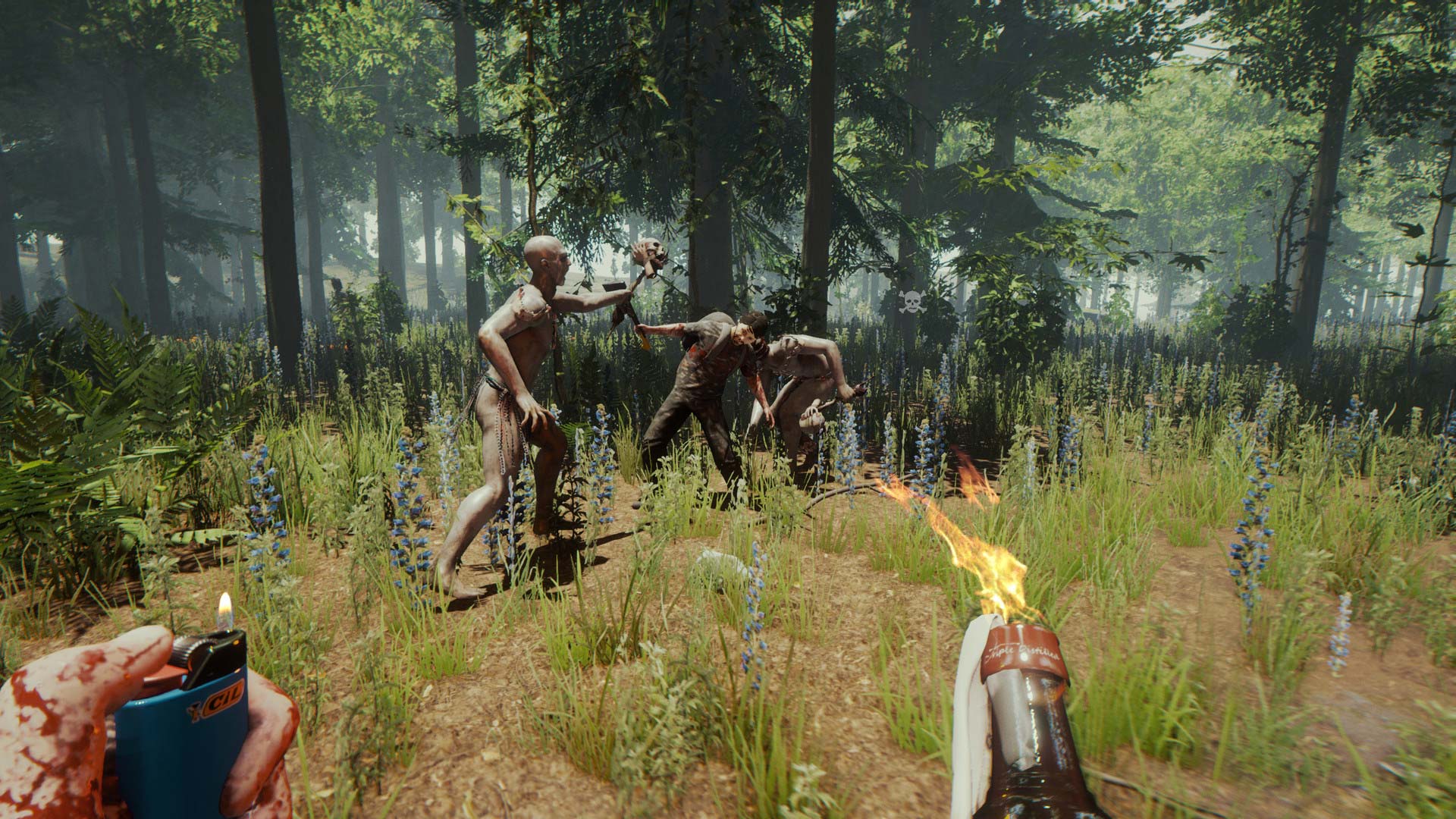
The Forest (VR)
The Forest caught my attention as a potential multiplayer game that I could play with other friends who have VR headsets. The game is billed as a first-person survival adventure set in an open world. Although it has the elements needed to be a good survival game, it is not. It's more of a campaign where the player is almost completely unguided and left to discover the story on his own. I almost never recommend this, but anyone wanting to play this title should probably watch a playthrough first. My disappointment stems from the fact that, although the game provides base-building and other survival elements, it's almost completely pointless. As soon as you establish a stronghold, you're subject to relentless attacks by the AI enemies (cannibals and other strange abominations) that make it impossible to accomplish anything else. A base should be, well, a base of operations. Safe from all but an occasional attack, and a place where you can regroup and craft needed items, a base should be a place to launch explorations and complete the campaign. This game fails miserably there, as you end up defending your base as a fulltime occupation -- repairing damage to yourself and the base. I started playing with one of my friends in VR, and eventually a couple others joined us.
We had a lot of fun for 15-20 hours of play and then abandoned it since we could make no progress. I recommend just playing the game as a solo FPS campaign, only stopping to build a basic shelter which serves as a savepoint (no autosave in this game). Another annoyance to expect is that 75% of the game takes place in nearly-unlit underground caverns. If you like seeing nothing but whatever your torch illuminated ten feet in front of you, this is your game.
June 2020
Steam Summer Sale
I took a break from my new VR setup during June and played some chill games during June. I played another 2 year game of Stardew Valley, built some new bases in Conan Exiles, goofed around in Human Fall Flat with some new people, played some Fortnite and Satisfactory with my nephew, and tried a couple of Humble Monthly titles. I gave XCOM2 and Rise of Industry a try, neither of which did much for me. I was surprised Rise Of Industry didn't hold my attention, usually that kind of game is appealing to me; I guess I just wasn't in the mood for what seemed excessively tedious. The other Humble title I need to try is Jurassic World Evolution. I've got it installed, but haven't tried it yet. The Steam Summer Sale landed, and I now have a serious backlog of games to explore. Among the titles I have in the queue now are Star Trek: Bridge Crew, Subnautica, Transference, and Gorn. I also grabbed a multiplayer VR game called The Forest which I just started playing. I will review it next month, but so far it's decent.
May 2020

A Month of Virtual Reality
I've played a lot of VR during the coronavirus tyranny, and I feel lucky that I got my headset when I did. I started off with Valve's The Lab, pictured, which is a freebie that serves as a demo; a good way to dip your feet in VR and get your space set up. I expanded my play area to about 13' x 11' which is close to the max you can do with two lighthouses, and it also is close to the realistic limit with the length of the included PC tether. I've had none of the problems with the hand controllers that others have had in the past, and the charge on them lasts me about 3-4 days of play. Other than an occasional glitch where the headset isn't discovered at boot, the system is functioning well. I've played two titles to completion, two more that I'm about half way through and intend to complete, and one more that I probably won't revisit. I've decided to give them all a mention this month.
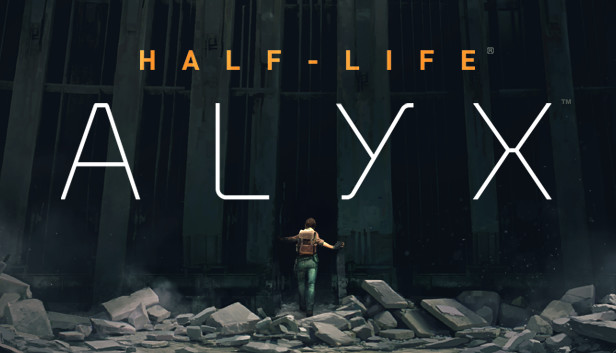
Half Life: Alyx
Hands down, this is the benchmark for a AAA, full price VR game. Valve invested in Half Life: Alyx like they would any other prestige title in their catalog, and the result is the target that all other VR devs should shoot for. The game is set between the events of Half Life and Half Life 2, but you don't have to be familiar with the Half Life universe to have fun in Alyx. The interdimensional alien Combine has humanity under its boot and you have to do your part to help take them down. A pair of gravity gloves help you fling things around and retrieve items, and a small arsenal of upgradeable weapons let you slay the headcrabs, zombies, and Combine soldiers. The environments are creepy, well-planned and designed to work with immersive, room-scale VR. The game's weapons handling mechanics are extremely satisfying, and the movement system is just about perfect. In my limited experience thus far, games seem to REALLY struggle with getting movement right -- and Alyx absolutely nails it. Time to finish, 16 hrs.

Moss
It took me about four hours to finish Moss, which makes the value proposition questionable at full price - but I picked it up in a Humble Bundle at a super low price, so that wasn't a factor for me. Having said that, this is an exceptional game. This game is proof that VR isn't going to be limited to FPS's and sims. This is a puzzle game where you thumbstick-control a tiny rodent's movement through miniature scenes, while also interacting with the scene as "full sized you" using the controllers as hands to manipulate objects. Designed exclusively for VR, you can move your head (and body if you want) around to look for hidden items and figure out how to get the mouse from A to B. It's billed as a seated-position game, but I played standing and really liked it. Some of the combat got a little twitchy and tedious, feeling out of place, but it wasn't too bad. I hope that titles like this inspire others to make VR games that don't follow the standard VR formula. Moss gets two thumbs up from me for an excellent use of the technology, and the creators were obviously passionate about turning out a quality game.

Arizona Sunshine
I had my eye on this game since I first started pondering getting a VR headset. It's a zombie-killing FPS set (as you might expect) in the Arizona desert. This is one of those titles that is highly rated, but really comes up short if you compare it to games like HL:Alyx. The selection of weapons is fantastic, and the shooting mechanics are satisfying, but the game has a lot of glitches. I've had to re-start chapters to recover from vital items simply vanishing from my inventory or the holster-system simply ceasing to function. The sniper weapons never worked for me either. The environments are well designed, but the dimly lit underground areas can get tedious. This game goes on sale quite often, and can be picked up for less than $10 if you are patient. I highly recommend it at that price. You'll have many hours of zombie-murdering fun with it, just keep your expectations in line with the price.

DooM VFR
Doom? In VR? How can you go wrong? As a mega-fan of the DooM franchise, and someone who loved the 2016 release of the game, I thought this would easily be my favorite VR title - having bought it before I even ordered my headset. I was wrong, and very let down. The game is fun, and it could easily be fixed so that it would live up to my expectations. All it needs is a way to rotate your player without physically spinning in the real world and getting your tether wrapped around yourself. Maybe the experience is awesome on wireless sets - but my frustration with the title comes from how insanely close it is to being done right. The player rotation is a fatal flaw, and I can't recommend buying it unless it's nearly free. Even on the easiest setting, it's still too hard if your spinning-in-place is physically restricted by a tethered headset. HL:Alyx got player movement down 100% correctly, Bethesda take note and fix this otherwise awesome game. I'm begrudgingly pushing my way through the title, because DooM.

Distance
Distance is a futuristic arcade-style racing game, played in VR in the seated position. I had a blast with it for about two hours, and then got to a point in one of the tracks that was simply too tedious to pass given the games fickle and half-working controls. I played with an XBox controller, and had great difficulty trying to customize the button layout - basically giving up after an hour messing with it. Distance vaguely reminds me of S.T.U.N. Runner, a classic arcade game from 1989, but not as engaging. Head tracking is well done, and VR makes you feel like you are really sitting in your vehicle - but the airborne control system is in desperate need of polish, and probably more tutorial if they want to have such twitchy areas of track. This game is highly rated on Steam, and the few negative reviews echo my own complaints about the game. This was an extra in a bundle for me, though, so I can't complain about the value side of it.
April 2020

Valve Index
I finally committed to a VR headset and purchased the Valve Index, which clocks in at a hefty $999 -- long story short, money well spent. We're basically at the end of the first-generation of modern home VR systems, and the Index is the high end of the market. It supports high refresh rates (90Hz-144Hz) needed to reduce nausea and headaches experienced by some, and a 1440x1600 resolution per eye which mostly eliminates the screen-door effect that plagues lower res headsets. The Index also features integrated stereo pass-through cameras, a microphone, and high fidelity off-the-ear headphones. It was important to me to have two way audio fully integrated into the solution so that I didn't have to muck with clumsily wearing multiple peripherals. Unlike other sets, the Index also has physical FOV and IPD adjustments -- the latter being very important to me since my eyes are pretty close together. The Index has the best FOV on the market, which really helps with immersion, and well-designed and comfortable hand controllers. The only downside of the Index is that it's still tethered. A single cable integrates display port and USB, and hangs off the back of your head while you play. My GTX 1070 has no problem pushing the titles I've tried so far, several of which I will review next month.

Call of Duty: Warzone
Activision-Blizzard published a free-to-play spinoff 2019's CoD Modern Warfare called Warzone, which features a battle royale mode and a much more arcade-oriented mode called Plunder. My gaming group has been playing quite a bit of Plunder, being our preferred mode, as it lets you get right into the action with your desired loadout of weapons -- and respawning is on a 15 second timer. It's a pretty straightforward loot-and-shoot FPS where you open crates and kill enemies to obtain cash, weapons and special-use items. The team with the most cash at th end of the match wins. We played a bit of the battle royale, but were not too impressed. Warzone is free, and is a redemption title after the miserable Blackout game Activision released in 2018. I paid full price for Blackout and had sworn off Activision games as a result -- now I consider us even. Cheating seems to be mostly under control, the amount of play required for unlocks is not absurd, and the initial grant of in-game currency was generous enough to buy the first Battle Pass which unlocked more items and more in-game currency. A positive experience overall, and everything full-priced Blackout should have been.
March 2020
Escape From Tarkov
Tarkov is a looter wrapped in an FPS. You, and teammates if you have them, are spawned at random places around a map and your primary goal is to make it to your designated exit alive. Your secondary goal is to get as much loot as you can, either by killing players and NPCs or finding loot in the world. It's a decent enough game, conceptually, and the loot is (painfully) detailed -- down to the individual rounds you can load in a magazine. Your "main" character can play any time, but you also have a disposable "scavenger" character that can spawn in every fifteen minutes -- with a random loadout. This gives you a chance to get loot without really risking anything. Again, conceptually this game is pretty solid. The execution is lacking, however. The game runs terribly and the server infrastructure is pathetic given the number of players the developer is trying to support. The player movement is lumbering, the controls are cumbersome, and the "realism" of not having a HUD to see your teammates is zero fun and makes you not want to play with your friends. This was a game hyped by streamers who were paid to hype it, and my gaming group bought into the hype. It was a waste of fifty dollars as far as I'm concerned. It's also not available on Steam or any major platform, and runs in its own launcher, which is another huge negative. This is an unpolished early access title that's selling for full price, and if it doesn't improve I won't be playing it again. I consider it a $50 lesson in why nobody should ever trust YouTube and Twitch "influencers," and how you can be affected by their dishonesty even if you're not a primary party to it. Caveat emptor, no refunds.
February 2020
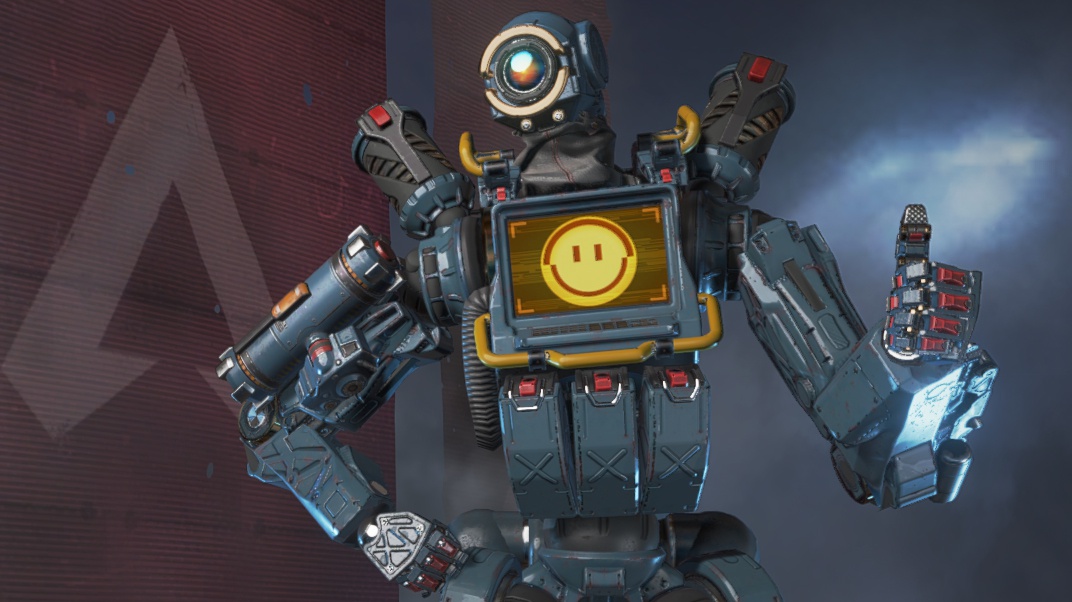
Apex Legends
Driven away from PUBG by absolutely rampant cheating, my gaming group decided to give Apex Legends another try after first playing it about a year ago. We weren't overly enamored with it previously, and the sentiment more or less holds now, but the game has improved somewhat since our first go-around. Apex is a free-to-play, hero-based battle royale which pits teams of three against each other in a fight to the last team standing. Each player chooses a character for the match, with different heroes having different special abilities -- one on a short cooldown, and one ultimate on a longer cooldown, as well as some passives. The game makes its money via paid faster unlocking of additional heroes and cosmetics. The grind to get unlocks without spending real money is fair, and not too arduous. My team seemed to win our fair share of matches initially, but we seemed to rapidly move into much tougher matches - presumably via the game's matchmaking. Within a couple weeks of play we were no longer winning any matches and we rapidly lost interest. Studies in lab rat play-fighting show that if they don't win at least some of the time, they stop playing, and I guess we aren't that different. Still, it was a nice break from getting hacked in PUBG.
January 2020

Shadow Of The Tomb Raider
I usually play an hour or two of a Tomb Raider game and then shelve it, but this title drew me in a little more with its immersive setting in the Peruvian jungles and its stunning visuals. (click to enlarge high res image) For those unfamiliar, Tomb Raider games are typically over-the-shoulder adventures chock full of platformer-like jumping, climbing, shooting, looting, and plenty of stealthing around -- with puzzles. The closest I could compare to another series would be a more linear and constrained Far Cry, with a more polished environment. I'm about ten hours into the campaign and I think I'm getting close to finishing it, but I haven't done any side missions or exploring so my completion percentage is probably not that high. Like other Tomb Raider games before it, Shadow suffers from an excess of long cut scenes, and the occasional twitchy sequence that makes you feel like you're playing an 80's laser disc game, guessing the right keys to press at the right time to keep from dying. On the whole, the puzzles are satisfying, the plot is more than tolerable, and the gameplay in general is fun. The game's beautiful environment and the design of tombs and crypts are very well done, and I recommend giving it a shot.
December 2019
2019 Year End Review
I finally let too much time pass between logins to my favorite Conan Exiles server and my base decayed and vanished. (I can't remember if this is my third or fourth character I've taken up to level 60.) Closing in on 700 hours in-game, Exiles is going to find a place in my Top-20 list. I just haven't decided on a ranking yet. I also continued to rack up hours in Quake Champions, currently just shy of 400 hours. It will never scratch the multiplayer-arena itch the way Quake 2 did back in the day, but I suspect Champions will find its way into my Top 20 as well. 2019 delivered some good sales where I picked up several new games that I had been wanting to play. Northgard, a casual, real-time, 4X game took me about twenty hours to finish and was a delight. I also recommend Surviving Mars, a city builder set on the red planet. Ubisoft dropped The Division 2 and Anno 1800 this year, both which I felt were quality games but nothing special. I had fun with them, but not like earlier titles from their respective series. Division2 also netted me a free copy of Far Cry Primal, which was not bad at all. I've reviewed all of these games separately, which you can find in the monthly entries below.
On a much more sour note, my fifth most played game of all time (almost 2000 hours) continues a developer-induced death spiral and most definitely will not be joining my top twenty despite how many hours I've logged. On top of taking away our ability to select the map we want to play, Player Unknown's Battlegrounds refuses to deal with rampant cheating in a meaningful way. The playerbase is on its knees begging for a region/ping/VPN lockout which would solve 90% of the cheating problem, or they could simply force people with absurdly high K/D to play with each other, but the dev refuses. IMHO, the future of online player-vs-player games is in real jeopardy because the attitudes of this developer are not unique. The technical solutions are there, but the studios ignore them...because reasons. Personally, I don't see much hope going forward unless there is a move away from cloud instances and a return to dedicated servers under the direct control of admins who care about the experience had on their server.

Satisfactory
My personal favorite of the year goes to the early-access title Satisfactory by Coffe Stain Studios. This game had two big strikes against it going in. One, it is an early access title which I generally avoid. Two, it's exclusive to the Epic game store which is muscling its way into the distribution-platform arena atop a mountain of Fortnite cash -- I'm not a fan, at all, of platform exclusives. Nevertheless, after watching a few videos of gameplay and catching it on sale I decided to try it. Instant favorite. Satisfactory is one of the most highly-polished early access titles I've ever played. Developers take note, this is early access done right. Coffee Stain put gameplay first and will work on narrative/lore after the heavy lifting is done. If I could take my $50 back from Star Citizen and give it to Satisfactory, I would.

Combining the spirit of Factorio with the immersive 3D first-person perspective of Infinifactory, Satisfactory has the perfect formula for the factory-building genre. With a deep tech-and-resource-tree, a beautiful alien world to explore, and a very minimal emphasis on combat (against hostile alien beasts) the game delivers everything I want in a factory sim. The user interface is intuitive and you can tell they've worked hard to get object placement and conveyor belt connection working smoothly and glitch-free. I did encounter some bugs when playing with a friend, and the multiplayer netcode still needs some work, as desyncs are common especially when driving. If you like loosely structured sandbox games, factory building, and can't get enough of conveyor belts - Satisfactory is for you. It's absolutely worth holding your nose and giving Epic your credit card.
What's in store for 2020

I'm fairly excited for what's coming in 2020: Bethesda is going to drop DooM Eternal, the sequel to DooM(2016) which quickly became one of my all-time favorites. Amazon is working on a survival MORPG called New World which is currently in an intermittent closed-alpha. If there's a PvE mode I'll almost certainly play, if it's strictly PvP then I won't play it if there is no region lock. 2020 might be the year (I say this every year) that I finally buy a VR headset. The Valve Index looks to be the right buy for me, and when Half Life: Alyx drops that might finally be the catalyst. At $400 it would be a no-brainer, but right now this is still a thousand dollar proposition, which gives me pause. I'm excited to see what Blizzard does with Overwatch 2, and I'm hesitantly optimistic that it will be worth buying when it comes out -- they seem to be putting some thought into keeping the playerbase from fracturing. I'm really looking forward to the new content in Path Of Exile II, and hope that doesn't push out to 2021. I'm a bit guarded, however, as the game has grown in complexity quite a bit since I last played. Hopefully Diablo 4 (just announced) is so far off that it won't compete with PoE2, I want to play both.
November 2019

Call Of Duty WWII
I have to admit that I thought both the Battlefield and CoD franchises were being a bit lazy with yet another rehashing of WW2 shooters, ala the early 2000s, but this 2017 title was well done. The campaign was short, taking me only six hours of Nazi-killing-fun to complete, but that was all I wanted to spend in a game like this so it was perfect. The story was well written, and the cut scenes were well integrated with the live action. Following CoD protocols, the story occasionally moves you away from the main protagonist and gives you a chance to fly fighter planes and command tanks. With plenty of satisfying sniping, and unleashing hell with mounted guns, the play is varied and engaging. The D-Day landing in the first chapter is particularly well done. The multiplayer is typical CoD as well: small maps, lots of camping, and immense fun for about twenty minutes. Overall, a great pick-up in Humble Monthly.
October 2019

Factory Town
Factory Town is a chill factory game that features typical base-building, resource exploitation, and tech development mechanics. There is no combat whatsoever and the only time pressure is what you put on yourself. The only real way to "fail" is to neglect to deliver goods to your housing zone, which will run down your reserves of currency which is needed to expand and keep building. This game has been described as "3D Factorio without combat." I got a solid 20 hours of play out of it, and would recommend it for purchase at around $10. My only major gripe is that it's fairly tedious to go "full 3D" with your factories. Elevating goods and crossing conveyor paths is a nightmare; dedicated lifts and conveyor poles are badly needed -- something Satisfactory absolutely nailed. The hackey work-around using silos is fairly lame. What Factory Town did wonderfully is infinite, procedurally generated worlds. Replayability will be off the charts if you fall in love with this game.
September 2019

Anno 1800
This is the latest installment in the Anno series, which is a city-building and resource management simulator. Like its predecessors, 1800 features deep and interesting production chains, satisfying sea faring exploration and goods transport, and diplomacy and combat if you want it. Unfortunately, the game introduces some annoying mechanics like per-island workforces, radius effect crop fertilities, and production rates expressed in counterintuitive time units. Anno1800 finally came off of new-release pricing and I picked it up for about $30, but I recommend waiting a bit longer if you're considering it. It's a ten to fifteen dollar title, in my opinion, and you're better off playing Anno 2070 instead. There are at least two major bugs in the campaign which require restarting the entire campaign, and have yet to be fixed by Ubisoft. One of these bugs struck me about five hours in. After abandoning the campaign, I played a sandbox game that was quite enjoyable and captures the essence of the series. This is a fine game, but 2070 is really the gold standard Anno game and topping its near-perfection is the tallest of orders.
August 2019

Quake II RTX
Quake II is my second most-played game of all time, with an estimated hours-count over 3000. This did not stop me from playing through the game again, adding another six hours to the count, with the recent release of Quake II RTX. It started as an indie project to bring ray-tracing to the old title, and was eventually taken over by NVidia to showcase the RT capabilities of their 20 series cards. I was stuck with software support for ray-tracing on my 1070, which was utterly unplayable, but turning off RT I was still able to thoroughly enjoy the new support for high resolution screens. I had an absolute blast playing through the campaign in 2560x1440. I haven't tried multiplayer yet, but I plan to hop on tastyspleen soon. The full version of Quake II RTX is free on Steam if you own the original game. Whether or not you own a ray-tracing card, I recommend checking it out if you were at all a fan of the iconic 90's title.

Elite Dangerous
I played about 20 hours of Elite Dangerous and felt a minimal sense of accomplishment...but I did play for twenty hours. That's the most generous endorsement of this niche title that I can give; I can't say that I really fit the niche. If you want a flight simulator in space, the core of the game will appeal to you. The progression in the game is "a mile wide and an inch deep." The major channels of gameplay all suffer from some serious monotony. The combat falls just short of being "arcade-y" enough to be fun, the exploration is all the same, the cargo-hauling is tedious and requires the use of external web sites and tools to work, and the mining is one-dimensional. I have a suspicion that this game is significantly more fun with multiple, fancy input devices. As it stands, the ship has just enough axes and controls to exceed the capabilities of a standard XBox controller for the most basic operation of the ship. If you go in expecting 20 hours of value you will feel OK about your purchase.
July 2019

Surviving Mars
Surviving Mars is a city builder with resource management, and just a faint hint of an econ sim. The game takes place on Mars, where your "sponsor" company has sent you to establish a colony and mine for rare metals. The only real economic challenge is keeping enough rare metals for your colony while selling enough to generate sufficient income for re-supply rockets from Earth. Other than that, it's a city builder -- and a pretty good one. You manage a small army of drones who do the heavy lifting and construction, while preparing domed habitats for human arrivals who will do other jobs. You have to keep your population stable in numbers, employed, housed and fed. I also bought the terraforming expansion Green Planet which adds a very satisfying element to the game of (slowly) making the climate on Mars habitable. Once you have enough vegetation, atmosphere and water your domes can open up and the inhabitants can enjoy a green planet. I give the game two thumbs up, definitely a game to grab on sale.
June 2019

Satisfactory
Satisfactory is an instant favorite for me. It's a first-person factory building game with deep and interesting production chains, a beautiful map that is fun to explore, and a well-tuned user interface. For an early access game it's extremely well polished and optimized. I've played both the base and experimental builds of the game, and look forward to the full release. This is the game I wanted Factorio to be. Combat is minimal and only serves as an admission ticket to new areas of the map, whereas in Factorio it seemed a constant nuisance and an integral part of the game's plot. Satisfactory's resource management, production chains, and nearly-optional combat are much more akin to an Anno game. It's like a mashup of Anno2070 and Infinifactory, two of my favorite games. I picked it up for $20, from the Epic game store, and it's easily worth twice that. I think if the developer hadn't gone exclusive to Epic this would have been a smash hit. It still might, but it will be that much harder. I also look forward to trying out the game's co-op mode.
May 2019
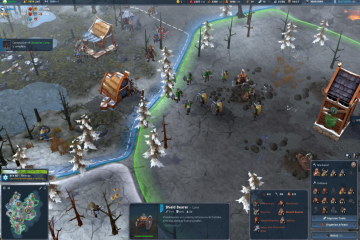
Northgard
Northgard was on my Steam wishlist for a long time, and when it appeared in the Humble Monthly I was thrilled. It's an RTS game that borrows the best elements of turn-based 4X games like Civilization. Everything happens in realtime, there are no turns, but territory is accumulated in parcels. It's not on a hex-map, and parcels can vary in shape and number of bordering territories. However, each parcel has a structure limit and only generates certain types of resources. Combat units are also limited by available training structures. In that regard, it's more like a 4X. For me, Northgard is perfectly executed. I have a general disdain for turn-based games, so I really enjoy the realtime exploration and combat. At the same time, there are just enough resource types and structures to keep things interesting as you manage them. Combat unit management is also kept easy with a great UI. It doesn't take an eternity to finish a game...I can't stress how happy that makes me in this style of game. I finished the campaign in about 20 hours, and will revisit it soon to try the skirmish mode.
April 2019
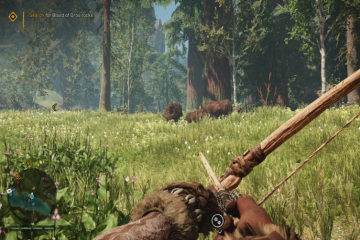
Far Cry Primal
If you're familiar with Far Cry games, imagine one set 10,000 years ago. Far Cry Primal has all the familiar elements of the series, an open world with story and side quests, outpost liberation, territory discovery, resource gathering, a small skill tree and basic crafting, while adding a pet system with beasts that help you fight. The stealth and "takedown" melee system is also very, very Far Cry. You are a member of the Wenja tribe, helping liberate the land of Oros from the cannibal Udam tribe. One game element that is slightly different than other, recent Far Cry games is that you have a "home base" that slowly gains Wenja population as you complete quests and discovery. There are unique Wenja out in the wild that you recruit to your village, and they unlock specific parts of the crafting/skill trees. The base and the huts of the unique Wenja can be upgraded as well. I got this title free with my purchase of The Division 2, and I'm definitely having fun with it. I would not pay full price for it though.
Others
I spent a few hours this month in each of Zombie Army Trilogy, Steel Rats, and Warhammer:Vermintide 2; all Humble Monthly titles that I'd picked up along the way. Zombie is like a cross between Sniper Elite and Left4Dead, which sounds like something I'd really like. But, it only held my attention for a few missions. There was too much tedium in looting for ammo all the time. Steel Rats is a side-scrolling 2.5D motorcycle game with a lot of interesting controls and mechanics. I probably would have played a lot more of it had the game been a bit more action-adventure oriented, and less "super meatboyish" with how death and level-restarting works. Warhammer was a fun little hack-and slash FPS where you get to mow down hordes of rat-men in Left4Dead style levels where the objective is to get to the end of a chapter. Again, sounded like something I'd really like -- but I ended up wishing it was more of an adventure-campaign style of game. This is probably the only game I've ever enjoyed playing the single player prologue over the mechanics of the actual (co-op) game.
March 2019
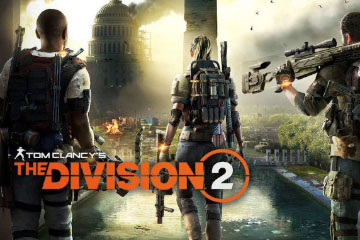
The Division 2
I played the open beta of The Division 2 earlier this month and went ahead and bought the full game. It's really just an upgraded version of the first Division game, set in a different city. Mechanically, if you know how to play the first game (cover-based tactical shooter) there isn't much to learn with The Division 2. It's a decent shoot'n'loot RPG set in post-apocalyptic Washington DC. The visuals are stellar, and the 4-man co-op is well done. I finished the main campaign and side missions in ~10 hours, so it's a short game -- but it has a rich post game designed to absorb as much of your time as you want. The PvP Dark Zone also functions similarly to the original Division, and offers its own leveling and looting scheme. I recommend the title if you have friends to play with, otherwise wait until it dips below $20 to pick it up. Along with this title I scored a free copy of Far Cry Primal, which I'm looking forward to playing.
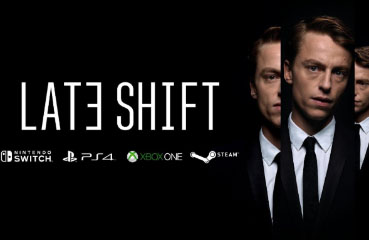
Late Shift and others
I picked up Late Shift as part of Humble Monthly and thought I'd give it a try. It was billed as a game, but was really an interactive movie similar to Bandersnatch. I enjoyed it, but did not put in multiple viewings to discover as many choices as possible. I enjoy this style of CYOA filmmaking, and I think it's a pretty good idea to release on Steam and other game platforms -- as long as the price stays around a couple bucks. I also delved into my backlog of games and played a few hours each of Ashes of the Singularity, Offworld Trading Company, Tower Unite, and Metal Gear Solid 5. None of those titles really did much for me, however, and I won't be revisiting them. Offworld Trading Company almost had me hooked, but it's a little dated and I'd rather buy Surviving Mars and play that if I get in the mood for a Mars-based builder/econ sim. Plus, the new Anno will be out soon...
February 2019
Civ VI and Conan Exiles
I've developed a large backlog of games I intend to play, but I've been spending an insane amount of time in Conan Exiles. My cumulative hours are closing in on 500, and I'm considering the game for my Top 20. The more I play this game, the more I realize that Funcom has really pulled off something great: a complete adventure/survival RPG integrated right alongside a builder that's every bit as addictive and creative as Minecraft ever was. All while having depth and sophistication (not to mention graphics) that aren't even in the same league as something like Minecraft. I wish this game had been a bit more polished and well-rounded when it was first released, I think it would have had a larger userbase; another beautiful baby stunted by the rotten crib of "early access."
I was patiently waiting for Civilization 6 to drop in price and, fortunately, they had a free weekend. I put about ten underwhelming hours into it, finishing the tutorial and one brutally long game. It was a bit of a let-down, and I don't intend to purchase the title. The AI seemed clumsy and aimless - not for any individual AI player, but in a multiple-AI game. The computer opponents were constantly declaring war on each other and then making peace two turns later. They'd denounce me one turn and offer a trade deal the next. After hundreds of turns not a single AI had eliminated another AI, and my territory seemed stagnant and unable to grow larger. I also lagged far behind some in development, and was far ahead of others -- having no idea what I was doing wrong to not be able to keep up with the leaders. Civ VI gets a big "meh" from me.
January 2019
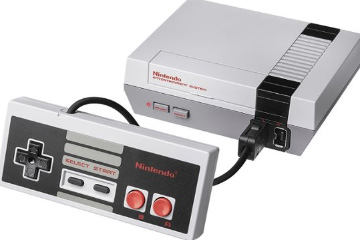
NES Classic - Metroid & Castlevania
I spent a good deal of time with my NES Classic playing two of my favorite classics, Metroid and Castlevania. Both games are in my all time favorites list, and I really enjoyed getting back in to them. The original Metroid is amazing to me, in that the game has no built-in map. Compared to games of today, there is a lot to remember -- even though the map is not particularly large. Playing Metroid on the NES Classic is vastly superior to playing it on the original system for one reason: you can save at any point. The Classic can simply save off the state of the entire system into under 2MB of storage (a trivial amount by today's standards) so that you can leave/resume your game at any time. No more tedious entry of savepoint codes. I used to be able to finish Castlevania on one life back in the day. I'm struggling to get back to that level of performance, but I can still finish the game in 3-5 lives.

Carcassonne: Tiles and Tactics
I spent a bit of time playing the official video-game adaptation of the popular board game Carcassonne. It's a tile and worker placement game based on completing roads and city regions, and using workers to "farm" field regions. The version I bought also included "The River" expansion. I rarely even write about board game adaptations because most of them are so awful, but I put multiple hours into this one. It's well done. It's not only faithful to the board game, but the AI opponents are fun to play against. They're quite good, beating me easily for my first few games. I picked it up in a Steam sale for just a few bucks, and I'd recommend it to any fan of the Carcassonne board game.
December 2018
2018 Year End Review
My gaming blog is mostly for me -- it's a kind-of diary of my hobby. It's about gaming, not the internal dysfunctions and politics of the gaming industry, but this year I feel that the gaming experience has suffered for it. My hobby is manifestly diminished by it, so I think it warrants mention. It feels odd to write about games that I didn't buy, but merited since I would have bought them under different circumstances. The good news is, I've hidden my rant if you don't want to read it.
My Favorite Titles Of 2018
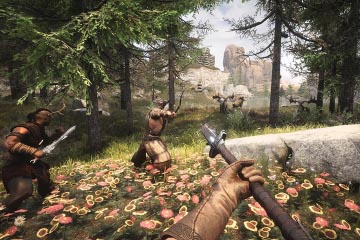
I'm in the middle of a second game of Conan Exiles, this time playing with a friend. Despite mixed reviews on Steam, I find this game highly entertaining. You do have to look past some glitches, but the core gameplay in Conan is very satisfying for me. Playing a locally hosted game probably insulates me from many of the problems the playerbase complains about. Part of what I like is that it's a fantasy/RPG but there is no magic to ruin the immersion/believability. The barbaric world feels very human-iron-age but is host to impossible beasts great and small for you to slay. The game is structured into a "journey" with steps for you to complete, but it's a survival game at heart and you basically define your own criteria for success. I've browsed the DLC with the intent of buying, but I didn't find any of it compelling. Conan Exiles was released as early-access last year, with official release this year, and was generously featured in Humble Monthly. I'll probably hit 200 hours in another week or two, and I'm naming it my top title of 2018. It's definitely going in my Top ~100.
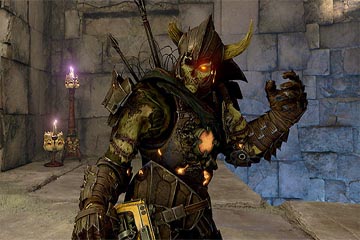
My other top title of 2018 is ID's arena shooter Quake Champions. Another 2017 early-access release, Champions went free to play for everyone in 2018. I've racked up 283 hours in-game, not including the few months I participated in the closed beta. Bethesda pushed out a large update this December, completely restructuring the game's progression/cosmetics system among other changes, and the update has hit some major snags. Overall, though, ID has done a good job of introducing new champs and maps over the course of 2018. The December update also (finally) gave us a capture the flag mode, filling that hole in your heart that's been empty since Quake Live. I also feel like ID did a pretty good job with skill-matching, given how insanely good a large chunk of the playerbase is. My win ratio and KD are about 1.15 across modes, which feels about right to me. I feel like I get more challenging matches the better I get. It feels good to have a Quake game to play after years with nothing new.
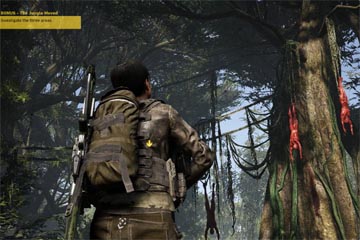
Three other games deserve a specific mention in this year's re-cap. I finished Far Cry 5 in about 50 hours and started a second playthrough, co-op with a friend. It's a solid title that merited the purchase price. I hit 282 hours in Stardew Valley, with two complete play-throughs this year. Those replays were thanks to new content and a co-op mode that lets you farm with your friends. Another co-op experience that I highly recommend is Tom Clancy's Ghost Recon: Wildlands. That game is also solid as a single player venture, taking about fifty hours to complete. You can read more about it in my November entry immediately below. I've added a few games to my Top 100 list, and I've also shuffled around a few titles in my Top 20, notably boosting Stardew Valley up into the #9 spot.
What's in store for 2019
There aren't any specific releases that I'm looking forward to in 2019, save for the delayed Anno 1800, but I have no shortage of games to keep me busy. My backlog currently includes Zombie Army Trilogy, Metal Gear Solid V, and Kerbal Space Program. I still haven't delved into ATrain 9.0, as I'm slightly intimidated by the complexity. It's on the list, though. When Surving Mars and Rimworld drop in price, those will get played. Another price drop I'm waiting for is Civ 6 to hit the $15 mark, which is when I'll dive in. I have a lukewarm desire to play Red Dead Redemption 2, but the model of "console exclusive first, then PC a year later at full price" really rubs me the wrong way. File that one under maybe-when-it-gets-cheap-maybe. In the meantime, I'll still play Steep, PUBG, Conan, Quake and other favorites of the past few years. My biggest hope is that some kind of military shooter will come along to freshen up the stagnant scene in that genre. The Division 2 is a possibility. I'm also curious to see where the battle-royale genre goes, as it seems like a passing fad that's currently burning the candle at both ends. I think the barometer will be the success of the inevitable sequels....Fornite II anyone?
November 2018
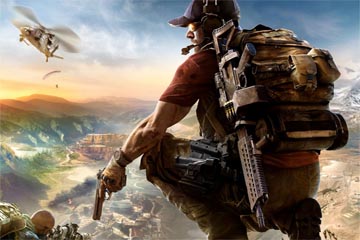
Ghost Recon: Wildlands
You and up to 3 friends are elite "ghost operators" deep in the Santa Blanca drug cartel's territory, somewhere in Bolivia. You carry out the CIA/DEA's dirty work against the cartel while also doing battle with Unidad, the area's corrupt military force. You can play solo and the game furnishes 3 AI teammates, who aren't bad at all, but it's better with buddies. The map area is the largest Ubisoft has ever built; at roughly 500 square kilometers it dwarfs the maps of massive games like GTA5 and Witcher III. The seamlessly-loaded terrain spans biomes from high plains deserts to thick, humid jungles -- and everything in between. The jungle is where the game really shines, though. The AnvilNext 2.0 engine (Steep, Assassin's Creed Odyssey) renders the most realistic, thick foliage I've seen in a game and manages to hold a consistent 60fps while doing it. Play without the HUD, at night, and it gets intense. Even after finishing the game I've gone back into the jungle covered hillsides just to look at the scenery. Did I mention that The Predator is lurking somewhere in that jungle, and he wants to fight you and your squad?
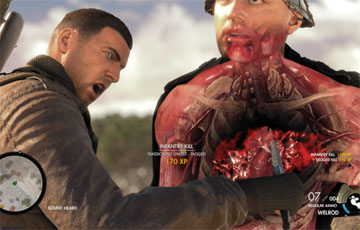
Sniper Elite 4
This is a WWII game set in Italy where you are an elite American sniper sent on various missions to kill Nazis and blow things up. This is my first experience with this series, and it was pretty good. I picked up the game for next to nothing and got a solid five hours out of it before I got bored. The game's signature is that each of your kills has an animation showing the internal damage being sustained by the unfortunate victim of your wrath. The game action enters slow motion and you see the bullets shattering skulls and teeth. Satisfying. I don't know if I'd buy another Sniper Elite game, but this one was pretty fun. I didn't finish it, but I don't really feel the need to.
Diablo 3 post-game and Surviving Mars
I played a free demo weekend of Surviving Mars which is a city-builder sim game set on Mars. You start off with drones as you build basic infrastructure and eventually you end up with domes that humans live in as they arrive. It was fun enough, I'll buy the game when it gets cheap. I also played 30-40 hours of Diablo 3 in adventure mode which was pretty entertaining. It's too grindy to hold my attention much longer, but 30 hours is a good run for this title's post-game as far as I'm concerned. I hadn't delved into the post-game prior to this, but it put the game back in my good graces after the mediocre Reaper of Souls expansion act.
Helldivers and Little Nightmares
Helldivers is an overhead game with a dungeon crawler feel, but the controls are traditional WASD fps style. It's an interesting combination, and far less "hack-and-slash" than Diablo or Torchlight. You have to be much more precise, as friendly fire can hurt your teammates. The theme is somewhat Starship-Trooper-ish with a bug world and a cyborg world to conquer. However, as far as I can tell, the game is completely randomly generated and the maps are somewhat monotonous. It also seems to lack a well-defined path of easy planets for a starting player to get going on. The colors are a bit washed out and much of the games interesting graphics end up severely muted. I'm not sure how much more I'm going to play, but it's a fun little game.
I had high hopes for Little Nightmares, a game similarly styled to Limbo or Inside. It falls far short of those titles, however. Side scrolling puzzle games don't need to be 3D, and full freedom of movement adds nothing other than depth/alignment frustrations in this title. The save points are too far apart, the puzzles are fairly lame, and there is way too much twitchy-platform jumping for me; not what I'm looking for in a game like this, at all. I want to sit back, think through some puzzles, and enjoy the (admittedly great) artwork of the game. But instead I quit after four or five reloads trying to time a switch-throw and a split second jump onto a moving crate. All with a load point forcing about 60 seconds of running and climbing to get back to the location where I keep dying. Maybe I'm doing something wrong? Nope, checked YouTube... it's a twitchy-jump. Pass.
October 2018
CoD Blackout and Stardew Co-Op
My online gaming group decided to try CoD Black Ops 4, which features a battle royale mode, as an alternative to PUBG. It was a fairly disastrous experiment, as we played about five hours and haven't touched it since. It's simply not a captivating experience and the only map is way, way too small. I rarely shell out full retail, new release pricing for a game -- much less one with no single player / campaign experience. So, this disappointing purchase packs extra sting for me, and I'll be that much more hesitant in the future to buy a game just on the whim of my gaming group. Bottom line, $50 down the toilet.

Standing in stark contrast to that experience was our playthrough of Stardew Valley's new co-op mode. It's every bit as fun as the single player experience, but your friends are there helping you out on the farm. We had some real trouble with the client/server connection about 3/4 of the way through the game, which resulted in me playing by myself for fall and winter of year 2, but that seems to have resolved itself now. I added a heap of new hours to my Stardew total, and enjoyed every one of them. There's not much new content, but just enough to keep it interesting, and the novelty of having your friends in-game made our playthrough fly right by (2+ in-game years).
September 2018
Rise of the Tomb Raider
I hadn't played any of the Tomb Raider games before, but this one came with Humble Monthly so I gave it a shot. It's absolutely gorgeous in terms of graphics, but the story and gameplay didn't do anything for me. It tries to be too many different types of games. It's like a Far Cry game with a much less open world, a more linear path, and way more "puzzleish." At times it seemed more like a graphic adventure of old, and even had moments that reminded me of a 1980s laser disc game where you had scenes that were almost pre-rendered and required specific key presses at exact moments. All this, while trying to be an RPG with crafting mechanics. Bottom line is it just didn't pull me in after four hours of play. If I hadn't just played an open world RPG that was done really well (Conan Exiles) I might have had more tolerance for Rise's clunky loot and craft system. The skill tree also felt like an afterthought, and the whole interface had a very console-ish feel to it.
August 2018

Conan Exiles
Capture thralls and break them on your Wheel of Pain, then put them to work at your compound! Conan Exiles is an open world survival game with online player vs. environment and player versus player modes, as well as a very satisfying single-player experience. Set in the world of Conan The Barbarian, you start with nothing but your bare hands and explore the world, slaying monsters and gathering materials to craft your home and weapons. The only flaw in the single player experience is that some of the boss creatures are too difficult to solo, and require a party to attack. This led to me quitting the game at about 80% completion after 84 hours of play. There are one or two resources that are way to grindy to farm, and the game's fast-travel mechanic is crippled and tedious -- but it will probably still be in my top 100 games list. I really enjoyed exploring the game world and checking off milestones in the story, which is neatly divided into 10 chapters with 10 accomplishments each. I tried starting an online character, but quickly became disinterested.
July 2018

Terraria
Terraria was the only game I picked up during the 2018 Steam Summer Sale. It's a side scrolling, 2D game with 8bit-ish graphics that can best be described as a 2D Minecraft in survival mode. The player explores above and (mostly) below ground, digging through a block based world and collecting resources from the mined blocks. Those resources can then be used in typical crafting mechanics in a hierarchy of crafting stations. There are NPCs to interact with; vendors, healers, etc. and an endless assortment of monsters to battle -- and bosses. I probably wouldn't have played more than a few hours if not for the game's stellar reviews. I'm glad I stuck with it a little longer, and ended up playing 13 hours. It's a game that people sink thousands of hours into, but accelerated too slowly for me to really get in to. I doubt I'll revist it, but it was worth five bucks.
June 2018

Destiny 2
I picked this game up with a subscription to Humble Monthly which gives you a handful of games every month for $12, usually including a AAA title. I'm taking a cautious approach to maintaining that subscription, but Destiny 2 was worth it. The easiest way to describe the game is "a more polished Warframe." It's a futuristic, sci-fi shooter/RPG but there are some weeb elements to it, with swords and ninja-looking attire. Weapons and gear pickups aren't as exciting or compelling as other RPGs, and the game is very grindy if you really intend to get into it. I played co-op with two other friends, and we got about 10-12 hours into the campaign before we were all tired of it. I liked Warframe quite a bit, it's in my Top 100 games list, but ultimately Destiny 2 isn't near as good -- despite being more polished. I just couldn't get into the story, and the inventory system is just clumsy enough to make looking at your pickups a "meh" experience. Still, I'm glad I played it. For twelve bucks, I got value out of it.
May 2018
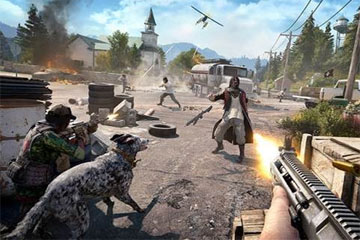
Far Cry 5
The latest installment in the Far Cry series was perfectly paced with an ideal duration, taking me just over fifty hours to complete the campaign and all side missions. The game designers make slight tweaks to the mechanics of how the map's locations are revealed, allowing access to the entire map at the start while locations are discovered through adventure and talking to NPCs. They also introduced two slots for NPCs to fight alongside you, recruited from a pool of specialists and fighters. The game takes place in Montana, USA and features the incredible detail and high caliber graphics you'd expect from the franchise. The plot is the usual band of hostiles (in this case a cult) that must be defeated and the areas they control liberated. The ending is classic Far Cry in the sense that they strive for a shocker that you won't see coming.
April 2018

Axiom Verge
Axiom Verge was another game that I was just waiting to pick up on sale. It has the feel of an old 8 bit Nintendo platformer, built in the style of Metroid, but has features that exploit a modern controller. Think Metroid but with a greater variety of weapons and special abilities. The game's story isn't spectacular. It's a little vague, and fails to draw you in the way that Metroid or Castlevania did - but the game mechanics make up for that. I estimate I'm about 50% done with the game, and I don't know if I'll finish as the map exploration is getting a little tedious. The map and bosses are also designed for good speed-run videos, which is a bit annoying. But all in all, I'd say you get out of Axiom Verge what you put in to it.
March 2018
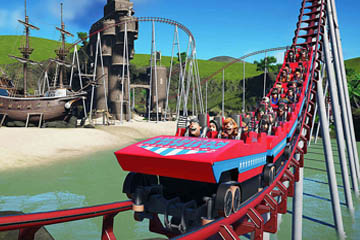
Planet Coaster
I had this game on my Steam wishlist for a while, and it finally went on sale. It turned out to be a great value, providing me with over twenty hours of entertainment before I got tired of it. I think I only made it through maybe half of the game's "campaign." It's more of an amusement park simulator than a coaster-sim, which I appreciated after finding that building custom coasters isn't as fun as just placing pre-built ones in a well-planned park. There are many other rides to put in your park other than coasters, and you can ride all of them first person when you are done. The foot traffic simulation of humans in your park is very well done, but the micromanagement of the park staff is somewhat tedious. Overall, a very well done game and some people will get hundreds of hours out of it.
February 2018
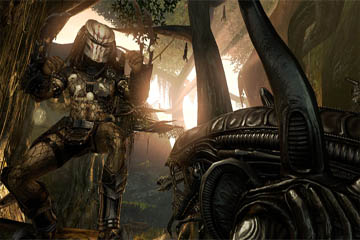
Aliens Vs. Predator
I grabbed this 2010 title during the Steam holiday sale for just a few bucks, and I'm pretty pleased with it. It looks surprisingly good for a title that's eight years old, and it does right by the Alien and Predator franchises. The game has three distinct campaigns: Colonial Marine, Alien, and Predator. I found the human campaign to be the most fun, followed by the Predator. The Alien mechanics suffered a little from the limitation that you are a creature with no technology or weapons, just lethal biological capabilities. The game re-uses map areas between campaigns, but does so in a unique way that doesn't feel cheap. I did not try any other game modes, and it took me about eight hours of play to finish the three campaigns...just right.
January 2018

Human Fall Flat
I picked this game up in a Humble Bundle a while back for a buck, and honestly that's all it's really worth to me. I finished the entirety of the game's content in about five hours, and it was somewhat amusing but nothing special. It's a physics puzzle game where you control a floppy doughboy, navigating your way through cleverly designed maps. The problem with this game is you spend more time wrestling with objects and character control than you do thinking about the puzzles. This can be somewhat entertaining at first, but it gets old. I did stick with it through the end, though, so that's something. I will give the game props for level design, and allowing more than one way to solve/navigate some areas.
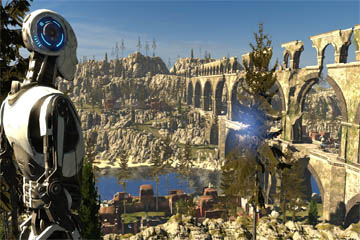
The Talos Principle: Road To Gehenna
I broke a rule of mine when I played this expansion for The Talos Experiment: always play a puzzle game's DLC right after you finish the main game. When I lose momentum with a puzzle game and then try to jump back I never enjoy it as much as I think I'm going to. Especially when the puzzles are more advanced than the ones in the base game, which is generally the case here. I found myself disinterested in gathering stars (optional, harder puzzles) in order to unlock an additional level and see alternate endings. That's in stark contrast to the base game, where I strived for 100% completion. Nevertheless, I did finish this DLC and enjoyed it for the most part. Talos remains one of my top puzzle games of all time, right behind Portal and Infinifactory. You can read my mini-review for The Talos Principle here.
December 2017
2017 Year End Review
2017 was a pretty solid year for gaming. Despite some industry troubles that have been stewing for a few years, 2017 was a pretty satisfying year for me in the niches that I play. As usual, I played mostly games that came out in previous years that have now dropped in price -- but I did play some 2017 titles. The undisputed top title of 2017 was the early access release of Player Unknown's Battlegrounds which sold over twenty million copies and posted a record-breaking two million concurrent players. Full release, including a console port, is planned for later this month. I've logged an absurd 675 hours since May, which is a statement since I usually don't even buy early access games.

Another 2017 release that I'm pretty excited about is Quake Champions. It's been way too long since we had a Quake game, and I jumped at the opportunity to join the closed beta. When it progressed to early access I bought it on Steam, even though my beta participation entitled me to continue playing for free via Bethesda's distribution platform. I bought it because I want it in my Steam collection, as I know I'm going to be playing many, many more hours of it for a long time to come. I'm looking forward to the addition of more champions and maps when the game goes to full release, date not yet determined.

Even though it was released in December of 2016, I'm handing the title of "Most Underrated Game of 2017" to Steep. Ubisoft's winter sports masterpiece lets you group with up to three friends as you explore the slopes across a vast expanse of terrain in the Alps and Alaska. There is no shortage of races, challenges, and events to participate in, but it's incredibly satisfying and relaxing to just explore the wilderness and find new areas and new runs to take. It's a shame that so much of the game market is being driven by loudmouthed streamers and their stim-junkie fans, and great games like Steep go largely unappreciated. But if you want to just chill on the slopes listening only to the wind, and the crunch of snow beneath your board, give this game a try.
There were multiple 2016 releases that I played in 2017 which became instant favorites for me. I.D.'s DOOM, which I started playing in late 2016, has a nearly perfect campaign. I've played it through on each difficulty setting, and plan on playing it several more times. I don't think I've enjoyed a single player campaign as much since Far Cry 3. Ubisoft's title, Tom Clancy's: The Division, hit it out of the park with a polished and immersive cooperative online campaign. Finishable in about four hours, Inside joined its predecessor, Limbo, in my Top 100 list. Lastly, the 2016 one-man-created title Stardew Valley earns my highest praise as the best indie game ever. I put 120 hours into it over the course of about five weeks, and I look forward to another play through some day. Doom and Stardew both earned provisional spots in my Top 20 list.

Infinifactory, a block-world sandbox puzzle game, was a 2015 release that flew under my radar until September of this year when I happened to see it on sale. Publisher Zachtronics, well known for other difficult puzzle games, released it via early access in 2015 and steadily added more content to it. I'm glad I played it now, as a finished game, as it's not the type of game you want to step away from for a while and then try to play again. I also gave Infinifactory a Top 20 position, the third game that I played this year to make the list. I'll see how I feel about that as time passes, but right now I feel like 2017 closes out as a solid year for video gaming.
What's in store for 2018
I still have a backlog of games I bought last year that I need to play, notably Atrain 9, Human Fall Flat, and an expansion for The Talos Principle. The good news is, I'm not seeing much that will drive more purchases for me when the Steam Christmas sale comes. I do have my eye on one indie title, Axiom Verge, which I'll buy if it drops to ten bucks or less. One announced 2018 title that I am definitely going to buy is Far Cry 5, which is slated to be out in March. If it lives up to what Ubisoft is promising in terms of online co-op, it should be pretty awesome.
Other than that, 2018 probably holds a lot more PUBG in store for me alongside Quake Champions, Steep, and (still) GTA5. Hopefully I'll have time to do another play through of DOOM as well. I keep meaning to revisit Space Engineers as I know they've added a lot of content since I bought it. In all I think 2018 will be yet another great year of gaming, but it will be hard to top 2017.
November 2017

Just Cause 3
I picked this game up in the Steam summer sale and I have mixed feelings about it so far, thinking that I paid too much for it even on sale. I have not played any of its predecessors in the series, but this one is very much like a Far Cry with some of the absurdity of a Saints Row thrown in. The game has a lot of great physics-based destruction, but it gets somewhat repetitive. The most entertaining aspect is getting around the map using a grappling hook (with seemingly infinite energy source), a parachute that can instantly repack itself, and a wingsuit. As fun as the movement mechanics and destruction are, they can't overcome the pretty dull plot and main story missions. There's just so many open-world action adventure games on the market that you really have to knock it out of the park to hold my attention.
October 2017

Diablo 3: Reaper of Souls
This is a three year old expansion, for a now five year old game, and is still priced at $20, which I'm not particularly thrilled about...but I did really want to play it, so I picked it up. Diablo is a good game to play in the fall, and so far the expansion has provided me with many more hours of dungeon crawling, monster slaying fun. With new enemies, a continuation of the plot, and a higher level-cap I'm looking forward to completing it. The game still suffers from being too easy on the hard (and even expert and master) setting requiring a push up to the "Torment" levels just to keep it interesting.September 2017

Infinifactory
I finished Infinifactory in 81 hours, building huge manufacturing facilities composed of conveyor belts, sensors, pushers, rotators, lifters, lasers, grinders and endless conduits. Infinifactory is a sandbox-puzzle game from Zachtronics, the creators of SpaceChem, set in a block-based minecraftish world with no mining, just crafting. Although there is a cobbled-together "plot" for the game, it's mostly just "here's your target object, now build ten of them given these inputs." You have a growing collection of factory blocks at your disposal that do small jobs and your task is to interconnect them to transform the input blocks into a completed object. The game was a bit longer than I would have liked, but it is definitely one of my favorite puzzle games of all time and a contender for my Top 20 list.
August 2017

Super Motherload
Motherload is my favorite web-based Flash game of all time, so I was really looking forward to Super Motherload which I picked up in the Steam Summer Sale. I wasn't disappointed, but there is really only about five hours of quality game play available. I have not tried the multiplayer, and I want to -- I could see that being fun, but it's only a local (shared screen) multiplayer which makes it unlikely that I'll get to play it. Super Motherload keeps with the theme and mechanics of the original, but takes out some of the more irritating aspects of it, while sporting high-res, fullscreen graphics. You pilot a small mining vessel below the surface of Mars seeking your fortune, and are confronted with mysteries and danger. You gather valuable minerals from below the surface and sell them, using your profits to better equip your ship for even deeper and more profitable excursions.
This War of Mine
This War Of Mine is a survival game that puts the player in the role of a civilian caught in the middle of a war zone. You control a group of civilians trying to survive in a besieged city, and can task them with different actions depending on their skills and health. I was really looking forward to playing this game, and it received great reviews, but it wasn't for me. It was too tedious and slow paced, and I found the crafting and trading pretty boring. I quit after 55 minutes of play.
July 2017

Stardew Valley
I rapidly hit 120 hours of play in Stardew Valley, perhaps the fastest I've ever logged that much time in a game. I'm tempted to give it a provisional slot in my top 20 games of all time, we'll see. Stardew is a farming/ranching game, where you also cultivate relationships with the townsfolk, inspired by Nintendo's Harvest Moon. There's no shortage of things to do, and the game's pace is as relaxing as you want it to be. You can also play it as a resource/time management game and try to maximize your efficiency. With its old-school, low resolution pixel art Stardew proves that content still trumps flash. The entirety of the game, from the code to the artwork and music, was created by one man.

Inside
Inside is a side scrolling puzzle/platformer game by the same developer as Limbo, and is basically a successor to that game. It has the same monochrome look and feel, mechanics, and a similar plot. Your character must solve environmental puzzles and avoid death as he progresses through a bizarre dystopia, attempting to make sense of the scenes he is witnessing. The game took me about four hours to finish, roughly the same as Limbo, and was very satisfying. I've read that there are multiple endings and secrets that I missed, so I may go back and play again. I wouldn't say it has huge replay value, however.
Steam Summer Sale
I ended up buying a total of six games/expansions in this year's Steam Summer Sale. Stardew Valley, Just Cause 3, and A-Train are all games that I've had my eye on for a while, and I was just waiting for a good price to pick them up. I was a big fan of the Flash game "Motherload" so when I saw its successor go on sale I grabbed it. I picked up This War of Mine simply based on its ratings, and The Talos Principle was a great game so I grabbed some DLC for it. I will write about all of these games as I play them.
- Stardew Valley
- A-Train 9 v4.0
- Just Cause 3
- Super Motherload
- This War of Mine
- The Talos Principle: Road To Gehenna DLC
June 2017

Quake Champions (beta)
I've been playing a lot of the Quake Champions closed beta for the past six weeks, but until recently it's been under a pretty strict NDA with streaming, images, and even discussion of the game being banned outside of Bethesda's dedicated forum for the game. That's all been lifted, so this is probably a good time to mention it here. I'm a huge fan of the Quake franchise, with Quake II contending strongly for my favorite game of all time, so I'm pretty excited about this new installment arriving twenty years after the release of Quake II.

Champions remains true to the fast paced heritage of the series while modernizing it a bit with selectable champs, each having different traits and special abilities. The Champions vary in their starting and max armor and health, speed, and passive abilities. Each also has a special ability on an extended cooldown. No, it's not Overwatch. An Overwatch playstyle won't cut it here -- it's still Quake. You have to know the map, master speed and position, have precise aim, and manage your health and armor stack. Think of it as Quake, just with a little spice thrown in. The beta servers are now up full time, so I'll probably be playing a lot more Champions in the coming months.

Factorio (demo)
Factorio is a resource management game of factory building and task automation. There are some realtime strategy elements in addition, as there is some fighting and defense of your equipment required. The player starts with only basic tools from his "crashed spaceship" and must build an industrial infrastructure to eventually escape back in to space. The game is low resolution and optimized for insanely large factory layouts, although you don't really get a taste of that in the demo. Ultimately I decided that this is not a $20 title, based on the multitude of quality games in that price range. I'll revisit if the price drops.
May 2017

Player Unkown's Battlegrounds
One hundred people parachute out of an airplane over an island at locations of their choosing, carrying nothing. They must find weapons, armor, and health items by looting abandoned structures. Land and sea vehicles can help cross large distances, but running is your primary mode of transportation. Every so often, the valid play area shrinks in radius. Those outside the play area will die if they don't move. The last man standing wins.

PUBG is a fairly expensive early access game, setting you back $30, but it's well worth it. The playerbase is large and you can find full solo, duo, or four man squad games at any time of day. I quickly hit the 100 hour mark in this game, and anticipate playing much, much more. It does have some of the problems that come with early access, and the game reeks of its Arma heritage, with a cumbersome interface and poor performance even on good hardware. On a 1070 at 2K/medium settings you can expect frame dips below 60 regularly. That said, the game still makes my Top 100 without a second thought. That's something no game in the Arma franchise can say.
April 2017

Steep
Steep is a winter sports game that allows the player to freely switch between a snowboard, skis, a wingsuit, a paraglider, a sled, a rocket wing, or just a parachute for BASE jumping. It's an open-world game with challenges and courses placed throughout the map, but simply helicoptering to a point on the mountain, choosing a line down, and exploring the vast back country is incredibly fun. You can play by yourself or in a group of four, and there is usually no shortage of people to group with online. The implementation of the skiing and snowboarding is outstanding, and really gives the sensation of being a downhill expert. I have four videos gameplay with my friend Matt on my YouTube channel.

I've racked up a ton of hours in a short amount of time in this game. Steep is probably the most underrated game of 2016/2017. Within half an hour of installing it I knew that it was going to make my Top 100. That's coming from a guy who doesn't really care for sports games. I'm not hesitant to call it the best winter sports game since 1080 Snowboarding for the N64. Being an online-only game with no campaign, it was probably priced too high by Ubisoft. I didn't buy it until it reduced to $40. But having played it alone and with friends, knowing what I know now, I'd have bought it at release time. With access to massive areas in the Alps and Alaska, there is almost endless terrain to explore and I look forward to many more hours of adventure in Steep.
March 2017

Toxikk
Toxikk is an arena shooter with mechanics in the style of Unreal Tournament. The game's motto, "frag like it's 1999," sums up the gameplay nicely. It's free to play, but I bought a 4 pack of the full version to try to get some friends into the action. Toxikk has well designed levels and runs smoothly. It has a server browser and a skill system. The game does suffer from an incredibly small playerbase, a problem common to arena shooters these days. It has a decent system of bots of various skill levels that will play against you until a server populates. I've logged about 15 hours in Toxikk, and it's my go-to shooter until I get a Quake Champions beta key.
Alien Isolation
Alien Isolation is the story of Amanda Ripley, daughter of the movie series heroine Ellen Ripley. It takes place after the events of the original Alien movie and follows Amanda trying to determine the fate of her mother. It's a survival horror game featuring a single, incredibly lethal alien loose in the environment. The game is genuinely terrifying, and will have you jumping in your chair. It's got a good story, good graphics, and the first few hours of play are quite enjoyable. About five hours in I still hadn't had any satisfying combat and I realized that it was a stealth-only game, even though I had several interesting weapons and throwables that I had crafted. I kept at it, though, and pushed on through about eight hours of gameplay. Then the alien started killing me every few minutes, even when I was well hidden. Load, die, repeat. Then I quit playing. This game has been out for a while, and I'm glad I got it for only ten bucks.
February 2017

Tom Clancy's The Division
I've been playing The Division since November of last year, and I've racked up about 70 hours of play. This ended up being a pretty solid game that is much more stable and interesting than what we got in the beta. It had a satisfying campaign that was just the right length, and ended when it started to seem repetitive. The post-game and Dark Zone (pvp) play was also very rewarding and entertaining. Although you can play by yourself, team play (2-4 players) is much more fun. The game takes place in near-future, post-apocalyptic Manhattan and pits you and your friends (agents of The Division) against elusive and mysterious, militarized eco-terrorists who have unleashed a designer smallpox on the city. It's a cover-based, third-person shooter with role-playing elements. It has good weapons progression, crafting, feature unlocking and inventory mechanics. It will definitely make my Top 100.
January 2017

DooM
I've been playing i.d. software's reboot of the Doom franchise, known widely as Doom 2016, for several months now and having an absolute blast. The online multiplayer is a dud, but the campaign is incredible. I've played the game all the way through on each difficulty setting, each time trying for what I consider 100% completion. Finding all secrets, collectibles, rune trials, etc. I've racked up 55 hours of play doing this, and that includes some time in multiplayer and the snapmap editor - a level editor included with the game. So, the game can be played through in a very reasonable amount of time, which adds to its appeal.

The idtech 6 engine can render the game using either DirectX or Vulkan, and both deliver an amazing level of smoothness that can only be described as silky. I get a consistent 100+ FPS on high settings at 2K. Combined with the fluidity of motion that the developers captured in your character's movements, it makes for a remarkable visual experience as you guide the space marine through the levels of Doom. From the incident-plagued halls of the Union Aerospace compound on Mars, to the gates of Hell itself and beyond, Doom 2016 is a first-rate demon slaying experience.
Endless Legend
Endless Legend, released in 2014, is a turn based 4X strategy game on a hex-map, similar to the Civilization games. There's roughly a dozen races or factions to choose from, and myriad strategies to employ in building your empire. My ten hours of gameplay in Endless Legend consists entirely of one game which lasted 300 turns, after which I barely won. I found the combat mechanics tiresome, and the game as a whole was overly detailed for my taste. I picked this up on sale, and probably won't play it again, but it will hold me over until Civ 6 drops in price.
December 2016

Witcher 3
Witcher III: The Wild Hunt is an open-world, third-person role playing game with plenty of action and violent monster-hunting. You play the hero, Geralt of Rivia, on a quest to find his apprentice/ward Ciri who is being chased by The Wild Hunt, sort of a gang of ghosts. That's the shortest possible description of the game's expansive story, which is rich and multi-faceted to a fault. This game has long cut scenes and plenty of them, and that's ultimately the reason I quit playing before finishing the game. The story is just to tedious. But the gameplay is amazing, the world is large and beautiful, the graphics are top notch, and I still racked up 45 hours of enjoyable play. Killing people from horseback with your sword is one of the most satisfying game mechanics of all time.
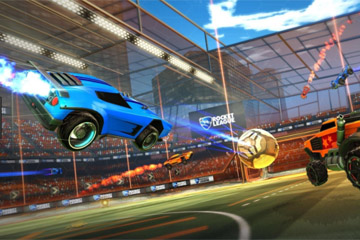
Rocket League
As a general rule I don't care for sports games, and I really detest soccer. I would have never bought this game if I didn't have so many friends that play it. I finally got it on sale, and it has been a rewarding purchase. Rocket League is "vehicular soccer" where you control a rocket car and try to hit a giant ball into the opposing team's goal. It's a very well crafted e-sports game in that it takes a few minutes to learn the basics, and hundreds of hours to master the advanced techniques needed to compete with decent players. I've enjoyed playing this game with my friends, and with my 13 year old nephew who is a significantly better player than I am.
November 2016

Cities: Skylines
Cities: Skylines is probably the best city builder since Sim City 3000 which came out almost twenty years ago. It's everything that EA's 2013 reboot of Sim City should have been. It has the familiar zone types, an intuitive interface, and all the familiar elements of classic city builders. It also adds advanced road construction mechanics along with a traffic simulator that really adds to the entertainment value of the game. There are still some annoying micromanagement elements, and some pace-of-growth issues, but overall it's a solid title and will be added to my favorites list. The game also has myriad mods available for it, and can be turned into a pure sandbox with infinite money and building unlocks making for even more hours of fun.
October 2016
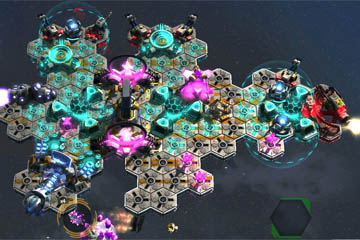
Space Run
Space Run is a tower defense and ship-building game with the goal of delivering cargo. The player must construct a ship with various shields and weapons capable of repelling the hazards and threats encountered during a "run." The player must build on the fly and manage the ship's assets in realtime during the mission. Credits earned from delivering cargo can be used to unlock new items and modules for the ship. Space Run is reminiscent of the board game "Galaxy Trucker" and so it had some automatic appeal for me. I got a solid 9 hours of play out of the game, but did not finish it. It's a pretty good take on the well-worn genre of tower defense.
Tropico 4
Every entry in the Tropico franchise has failed to hold any interest for me, and so I don't know why I thought 4 would be any different. I picked it up in a Humble Bundle for next to nothing, so I can't say I feel cheated, but I played well under one hour before hanging it up. It tries to be a resource management city builder with a cold war caricature of a plot, but it just doesn't do it well. The game has decent reviews, and there is a big base of fans of the franchise, so don't take my word for it. But it's just lacking something.